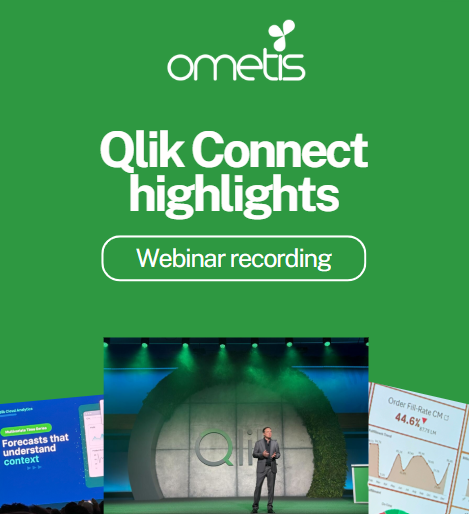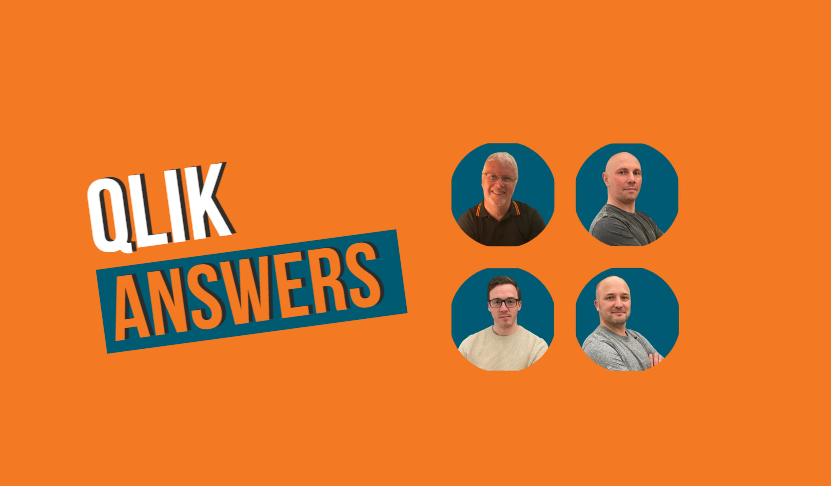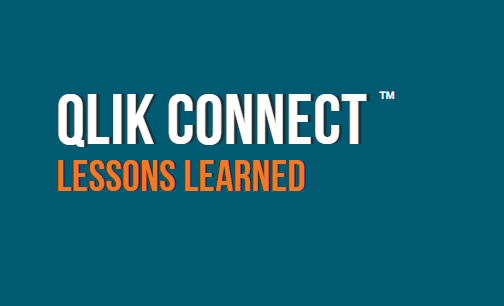Webinar
We ran a webinar on this topic on January 16th, 2024 in which Chris Lofthouse took us through the functionality.
Introduction
Generate dynamic tabular reports by integrating the Qlik add-in for Microsoft Excel with the report preparation features offered within a Qlik Sense application. Easily deliver report output via email and to designated folders in Microsoft SharePoint connections. Reports will be saved in .xlsx format.

In Qlik Cloud Analytics, you have full control over managing your tabular reports in the Reporting section under the Prepare tab in the Qlik Sense app.
Report jobs are easily created and managed through report tasks, allowing you full control over data reduction with report filters. You can conveniently access recipients and associated groups, including multiple recipients, from a distribution list.
Generating tabular reports is typically a task managed centrally by a skilled team of report developers. Tabular reports in Qlik Cloud Analytics are delivered through the value-added Qlik Reporting Service capability. To find out more about the capacities included in your Qlik Cloud subscription, simply reach out to your account manager. For detailed information regarding centralised report development and delivery, please refer to our comprehensive guide on Reporting from Qlik Cloud Analytics.

End-to-end workflow
At a high level, complete the following steps to create a tabular report:
Create your report template using the Qlik add-in for Microsoft Excel. The template determines the data that fills the report when it is generated.

- When using the Qlik Sense app to generate the report, you can define the app's distribution list. This list includes all recipients and groups of recipients who can receive the report output.
- Simply upload the template file into your Qlik Sense app.
- Set up a report task in the app to customise how the report will be delivered.
While you're developing your report template, feel free to test its output using the preview functionality in the add-in. Take a look at the preview of the report to see how it will appear.
To unlock the complete range of possibilities for report generation in Qlik Cloud Analytics, make the most of the following features:
- To further enhance the accuracy and specificity of the data displayed in reports, utilise report filters. These filters enable the customisation of report content, allowing a single report task to generate personalised output that caters to the unique needs of each recipient or group. You can define filters at a global level (within the report task), at the recipient level, or implement both options for maximum customisation.
-
You can easily set up the report output to be distributed to a remote distribution folder. This distribution folder is defined using a Microsoft SharePoint data connection. You have the flexibility to use distribution folders in addition to, or instead of, email distribution.
Requirements
Please keep in mind the following general requirements:
-
To fully utilise tabular reporting in Qlik Cloud Analytics, it's important to understand the capabilities and restrictions of your Qlik Cloud subscription. Before using these features, we recommend checking in with us so we can familiarise you with your tenant's capacities and limitations.
- To distribute your report output via email, it is necessary to configure an SMTP server for your tenant.
Permissions
To effectively manage the report tasks and distribution list within a Qlik Sense app, certain roles are required. These roles grant access to the Reporting section in the Prepare tab of the app, allowing for seamless management and organisation of reports.
The permissions needed may vary based on the specific location of your app within the space.
Requirements for apps in shared spaces
Here's what you need to know if you're using apps in shared spaces:
-
In order to access and utilise the Reporting section of an app, it is essential to have the necessary permissions to edit the space within which the app is located.
-
In order to incorporate a distribution list into your report tasks, it is essential to have the ability to edit data in apps within the shared space.
To gain a deeper understanding of the roles necessary for effectively managing your app's reporting capabilities, be sure to explore the comprehensive guide on managing permissions in shared spaces.
Requirements for an app in your personal space
To have complete authority over report tasks, distribution lists, filters, and templates, it is imperative that you possess the user role of Private Analytics Content Creator in your tenant. This role empowers you with the ability to exercise full control and customisation in managing your reports.
Who can receive tabular reports?
Within Qlik Cloud Analytics, you have the capability to effortlessly distribute Excel email reports to recipients both within and outside of your organisation. Discover the various types of recipients and the valuable information they can expect to find in their reports in the table below:
| Recipient Type | Description | Behaviour |
| Internal |
A user in the Qlik Cloud tenant. |
The content of the recipient's report will be determined by the access that the report task owner has to the app, unless the app utilises section access. |
| External | A user not in the Qlik Cloud tenant. | Data included in report is always based on the access of the report task owner. |
If you opt to distribute reports through a distribution folder in Microsoft SharePoint, the reports can be accessed by anyone who has permission to access the designated location.
It is crucial to consider the impact of section access in the Qlik Sense app on the recipients of the reports. If your report will use section access the following section will provide guidance.
Tabular reporting and section access
The level of data reduction in a report depends on whether the source app utilises section access.
For internal recipients of the report (users within the Qlik Cloud tenant), it is essential that they have the necessary access to the app and are included in the section access table. Only then can the report be generated and sent to them. The data in the report output will also be tailored based on the user's data access restrictions defined in the section access script.
Report tasks and section access
Understanding the nuances of working with report tasks becomes crucial when dealing with apps that utilise section access.
-
When including or excluding a section access table from the app, the report task will be automatically disabled. This allows the report developer to evaluate whether they want to proceed with report distributions, taking into consideration the requirements of the recipients listed in the distribution list.
-
If the app does utilise section access and a tenant administrator decides to modify the ownership of the report task in the Management Console, the report task will be automatically deactivated. Subsequently, only the new owner of the report task will have the ability to reactivate it.
-
If the app utilises section access, the option to deliver reports through a Microsoft SharePoint distribution folder is not supported.
Administrator requirements
Qlik Cloud administrators have the power to enable or disable reporting functionalities in the Management Console, giving them control over the availability of reporting, subscriptions, and sharing.
If you possess all the necessary authorisations but are still unable to access the tabular reporting features, don't hesitate to reach out to our support desk at support@ometis.co.uk for assistance. They have the expertise to help you navigate any access issues and ensure you can make the most of these valuable reporting capabilities.






Comments